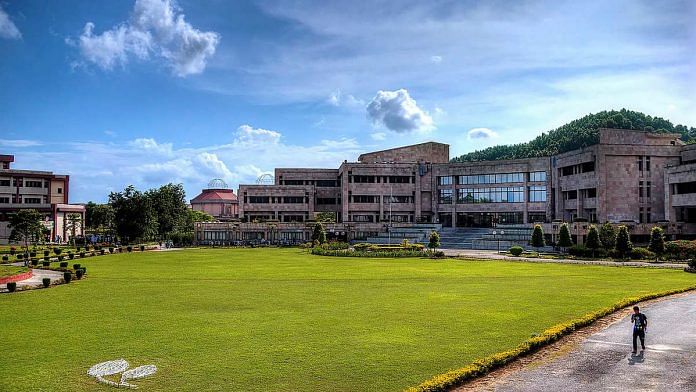The spark for this column is the news that the National Testing Agency, which conducts the prestigious JEE and the NEET exams, is in talks with our ambassadors and high commissioners in 63 countries to extend the number of exam centres. This is not just for the benefit of Indian students abroad, but also for foreign students who wish to study engineering and medicine in India.
These exams enable admissions to premier institutions like the Indian Institute of Technology (IITs) and other government-sponsored engineering and architecture institutions as well as the All-India Institute of Medical Sciences (AIIMS) and other government medical colleges.
London to Delhi
It is interesting that this conversation is taking place 100 years after the colonial government accepted the long-standing demand of the Indian nationalists for the simultaneous examination for the Indian Civil Service (ICS). The campaign was spearheaded by Surendranath Banerjee and had resolved over successive sessions of the Indian National Congress (INC) from 1890. As it was extremely difficult for Indian students to travel to London to take the exam, Jamsetji Nusserwanji Tata set up a fund to offer loan scholarships to Indians who went to study in the UK on the condition that they take the ICS exam. Before 1922, one-third of the Indians who qualified for the ICS exam, held those days only in London, availed of this fund.
In March 1922, the law centre of Allahabad University became the venue for the first ICS exam with the same set of question papers as in London. K.P.S. Menon, who moved to the diplomatic corps and became India’s first foreign secretary, topped it. Prior to that, in 1918, C.D. Deshmukh, who became the Governor of the Reserve Bank of India (RBI) in 1943, and later India’s finance minister from 1952 to 1956, had topped the exam in London.
The Forest Service examination was also held for the first time the same year in India. Thereon, it was decided that 40 per cent of the selections for both the ICS and the Forest Service would be from those who took the examination in India. Incidentally, London continued to be a centre for the IAS examination till its abolition was recommended by the Kothari Commission in 1976. This was also recalled anecdotally by Vijaya Raje Scindia on a visit to the Academy in 1997 when she was the Department of Personnel and Training (DoPT) minister. She mentioned with a chuckle how she negotiated with her father to extend her stay in London to take the exam. Well, obviously, fate had other (better) things in store for her!
Also read: Modi govt takes IAS promotions to next level—Additional, Joint Secretary now come closer
The mushrooming of Indian colleges
For the record, in 1922, there were only eight engineering and an equal number of medical colleges in India. The first engineering college, Thomason College of Civil Engineering was established in Roorkee in the year 1847 for the training of civil engineers in the irrigation and civil infrastructure of the British Raj. The college was renamed as University of Roorkee in 1947 and then as Indian Institute of Technology in 2001.
In July 1854, the precursor to Pune’s College of Engineering, the Poona Engineering Class and Mechanical School was opened to train intermediate officers in the Public Works Department. The Calcutta Civil Engineering College was opened at the Writers’ Buildings in November 1856 and affiliated with the University of Calcutta in 1857 when it was established. A year later, the College of Engineering was established in Madras Presidency.
In 1914, the University of Calcutta established its own science and technology campus that came to be known as the Rajabazar Science College. M.M. Malviya took the initiative of setting up the first ‘Indian’ engineering college: The Banaras Engineering College at Varanasi in 1919. The college is now upgraded to the status of an IIT. Two years later, the governments of the erstwhile United Provinces and Punjab established the Harcourt Butler Technological Institute at Kanpur for chemical sciences in 1921 and the MacLagan Engineering College in Lahore for mechanical engineering.
With regard to medical education, the credit goes to the French for establishing a medical college called the Ecole de Medicine de Pondicherry in 1823. After Independence, it was rechristened the Jawaharlal Institute of Postgraduate Medical Education and Research (JIPMER). The East India Company followed the French after 12 years by establishing medical colleges in Calcutta and Madras in 1835. The Bombay Medical College, named after then-Governor Sir Robert Grant, started functioning in 1845 alongside Thompson Hospital. This is today known as the Sarojini Naidu Medical College & Hospital. In Punjab, the Lahore Medical School was set up in 1868 under the patronage of the University of Dublin before getting affiliated with the Punjab University a decade later. The King Edward Medical School, Indore, came up in 1878, and the iconic King George’s Medical College and Hospital in Lucknow was opened in 1911. The second medical college in Madras, the Stanley Medical School, was started in 1917.
Today, in the Amrit Kaal of our Independence, India has 542 medical colleges, 64 stand-alone post-graduate colleges and 300 dental colleges besides 273 ayurvedic, 82 homoeopathic and 52 unani colleges offering bachelors degrees. The number of engineering colleges is even higher — 2,500 and growing. This includes the 23 IITs, the 25 IIITs (Indian Institute of Information Technology) and the 31 NITs (National Institute of Technology).
What a century.
Sanjeev Chopra is a former IAS officer and Festival Director of Valley of Words. Till recently, he was the Director of the Lal Bahadur Shastri National Academy of Administration. He tweets @ChopraSanjeev. Views are personal.
This article is part of the ‘State of the State‘ series that analyses policy, civil services, and governance in India.
(Edited by Humra Laeeq)



